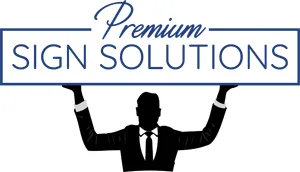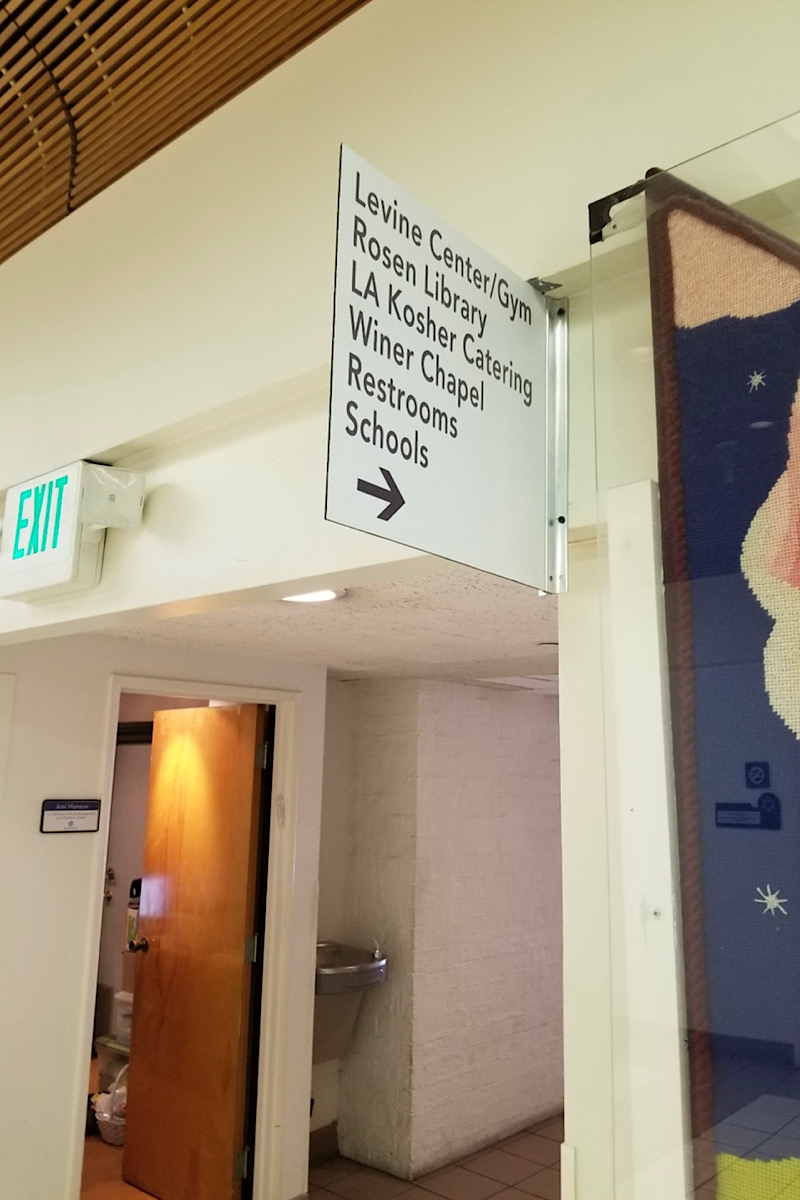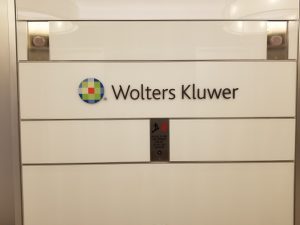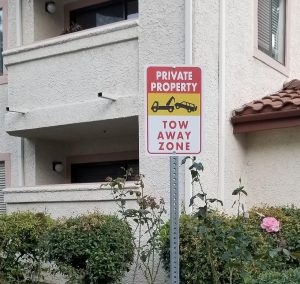What is Signage in the Workplace and Why It Matters
In every workplace, from hospitals and high-rises to law firms and shopping centers – signage quietly shapes how people feel, move, and engage. It directs traffic, reinforces brand identity, maintains safety, and makes those complex buildings feel navigable.
So, what is signage in the workplace, really?
Workplace signage refers to any visual communication: permanent or temporary, used in a professional environment to inform, guide, protect, or reinforce culture. It might look like a lobby emblem on a wall, a fire exit sign next to a door, a room number, or how about a digital screen announcing a meeting in a busy reception.
But good signage does more than label a door. It becomes part of how an organization thinks, operates, and communicates its values, internally and externally.
Why Workplace Signage Is Essential in Every Industry
From corporate campuses to healthcare systems, business signage is a strategic tool — not an afterthought.
Here’s what it delivers:
- Office environments: Reinforce brand culture, aid in wayfinding, boost professionalism
- Healthcare settings: Ensure ADA compliance, speed up navigation, reduce stress
- Legal and financial buildings: Maintain formality, privacy, and procedural clarity
- Shopping malls: Drive sales, improve customer flow, enhance store visibility.
In fact, 70% of people say signage influences their first impression of a business.
Bottom line: Better signage reduces confusion, increases operational efficiency, and strengthens brand perception. It’s a silent ambassador for your organization.
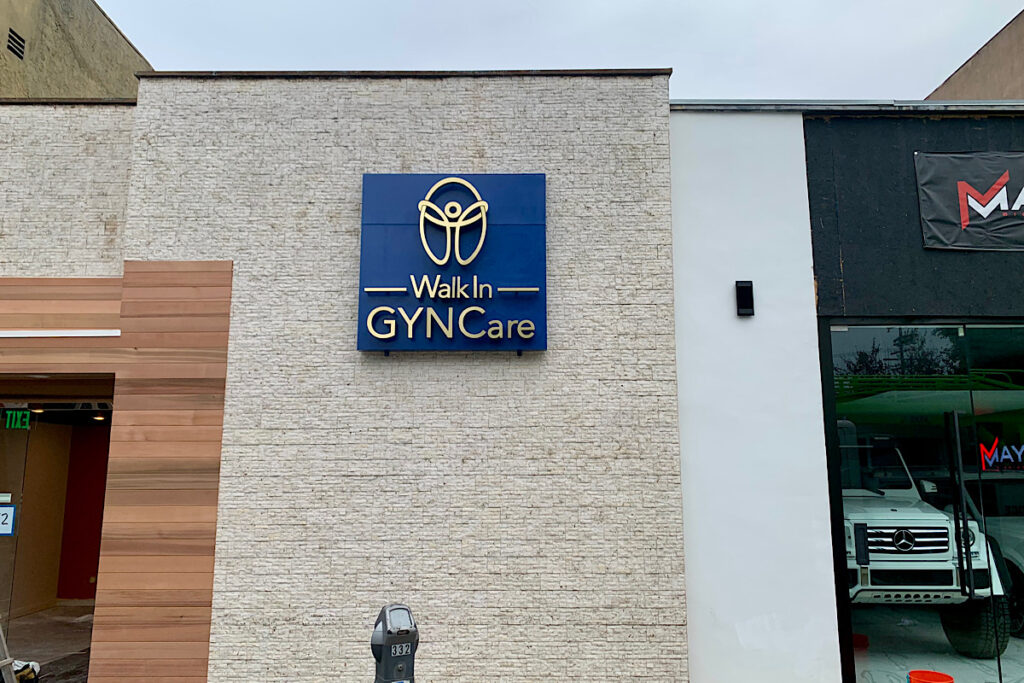
Types of Workplace Signage and Where to Use Them
To work well, signage needs to do more than look good. It needs to solve real problems. Here’s a breakdown by function:
Wayfinding Signage
Directs traffic in offices, campuses, hospitals, and retail centers. Helps new visitors feel confident and prevents bottlenecks.
ADA-Compliant Signage
Required in public and commercial spaces. Includes tactile lettering, Braille, and proper placement. Crucial for hospital signage, government offices, and anywhere accessibility matters.
Brand Identity Signage
Think reception signs, dimensional logos, or wall murals. These elements create cohesion across an office, campus, or client-facing space.
Safety and Regulatory Signage
Includes emergency exits, hazard labels, and compliance notices. These protect people and reduce liability, especially in labs and hospitals.
Digital Signage
Great for lobbies, malls, and corporate offices. Can display announcements, directions, or real-time updates to adapt to daily needs.
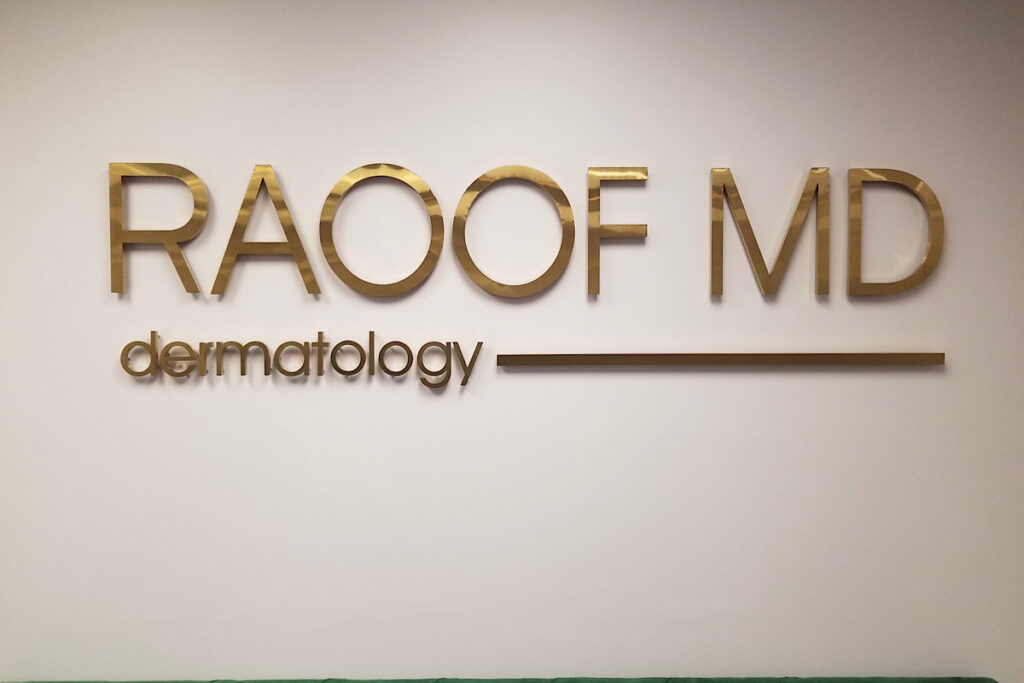
How Signage Impacts the Workplace Experience
Done well, signage improves both function and feeling.
- For employees: Less friction, more focus. They know where to go, what’s expected, and how to get help.
- For visitors and clients: Clarity builds confidence. Whether it’s a reception sign or a building directory, they feel welcomed and reassured.
- For customers: Good signage reflects operational excellence. It tells people: “We’re organized. We care. You’re in the right place.”
- For facility and operations managers: Signage brings structure to daily movement. It keeps spaces neat, consistent, and easier to manage – whether you’re directing foot traffic, protecting restricted areas, or reminding tenants not to block loading docks. Good signage enforces policies without confrontation. It’s clarity, on the wall.
Even subtle details, like color contrast, typography, and layout, can influence whether someone feels calm, confused, or overwhelmed. “Signs let you say it once – and let the wall do the rest.”
For facility managers, consistent signage is more than branding. It’s a way to maintain order, communicate rules passively, and set expectations at scale.
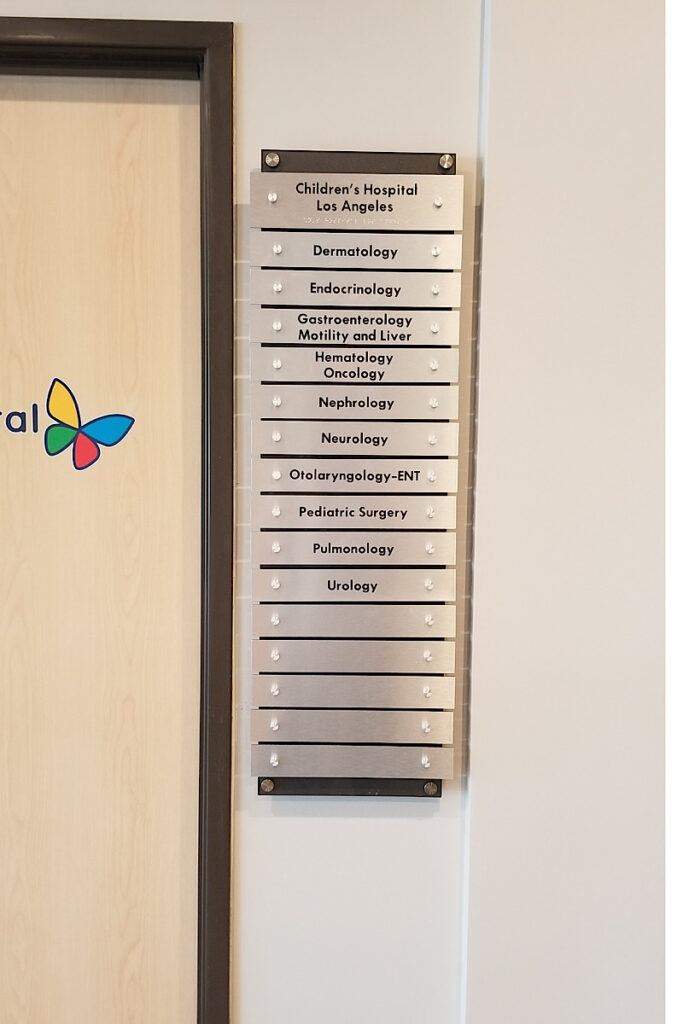
Examples of Effective Signage by Sector
Healthcare Facilities
- Use cases: ADA directional signs, multilingual clinic labels, infection-control reminders
- Impact: Faster navigation, reduced anxiety, and improved patient experience
Financial Institutions
- Use cases: Teller IDs, dimensional letters, private office signs, compliance notices
- Impact: Trust, order, and clear service flow
Legal Offices & Courthouses
- Use cases: Room IDs, bilingual courtroom directories, “No Cell Phone” signs
- Impact: Maintains decorum and supports procedural clarity
Office Complexes
- Use cases: Branded directory signs, meeting room markers, tenant signage
- Impact: Professionalism and internal cohesion
Retail Environments
- Use cases: Mall directories, parking signs, promotional displays
- Impact: Wayfinding plus revenue uplift through clearer store discovery
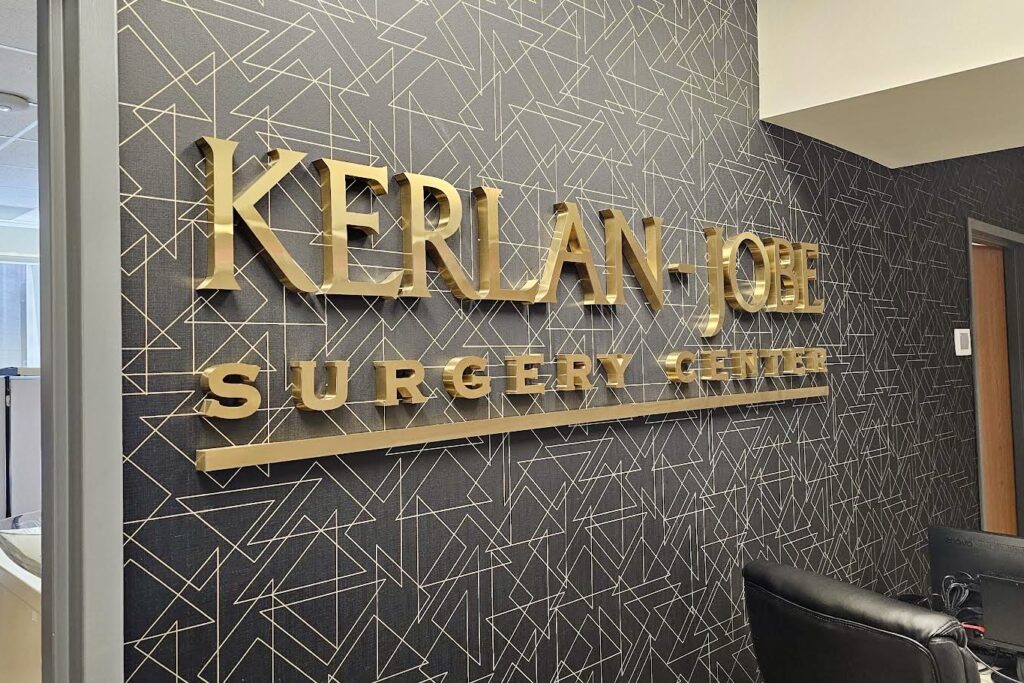
What Makes Signage Work in a Professional Setting
To be effective, professional signage needs more than good looks, it needs to communicate quickly and clearly. Here’s what separates good signage from forgettable signs:
- Clarity and brevity: The best signs say the most with the fewest words. Clear, concise wording ensures everyone understands the message instantly, whether it’s a direction, a warning, or a brand statement. (This is often where facilities teams see the biggest impact.)
- Consistent brand identity: Fonts, colors, tone, and placement should reflect your company’s personality and values, and look the same everywhere.
- Durable materials: Especially important for high-touch areas, outdoor environments, or industrial spaces.
- Compliance-first design: ADA and safety regulations aren’t optional, and good signage gets it right without sacrificing visual appeal.
Tip: Walk your space like a visitor. Is anything confusing? Unlabeled? Outdated? That’s where to begin.

How to Implement a Workplace Signage Strategy
If you’re not sure where to start, don’t worry — most teams aren’t. That’s where a smart signage partner comes in. Here’s the path we recommend:
- Audit your current signage: What’s missing? What’s confusing? Where are people asking for help instead of finding answers on the wall?
- Prioritize high-impact zones: Think entrances, reception desks, shared spaces, and compliance-required areas.
- Work with professionals: A good sign partner will know how to balance form, function, compliance, and aesthetics.
- Design for change: Whether through modular systems or digital displays, your signs should flex with your facility as it grows.
Need help designing your facility’s signage system? We help companies build clear, consistent, scalable signage strategies that make life easier for teams, tenants, and visitors. Whether you’re managing a single site or a multi-location portfolio, we’ll create a signage playbook that fits your space, your workflow, and your brand.
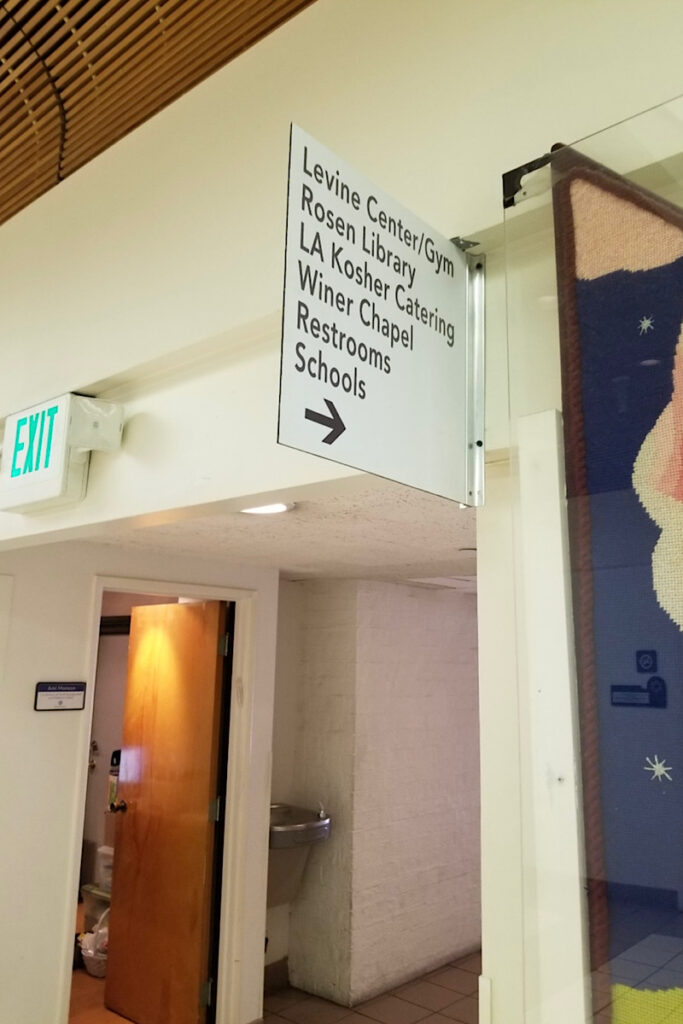
FAQs About Signage in the Workplace
What is signage in the workplace?
It’s any visual communication used within a business or institution to inform, direct, protect, or promote the organization’s identity.
Why is office signage important?
It guides employees and visitors, boosts brand consistency, and supports productivity and compliance.
What are examples of workplace signage?
Reception signs, office directories, ADA restroom signs, exit signs, safety warnings, and digital announcement boards.
How does signage impact employee experience?
It reduces confusion, saves time, and reinforces a sense of clarity, safety, and professionalism.
What signage is required by law?
ADA-compliant signs, emergency exits, fire safety labels, and certain health & safety notices, depending on your location and industry.
Can signage improve workplace productivity?
Absolutely. Clear navigation, fewer distractions, and better internal communication all support smoother workflows.
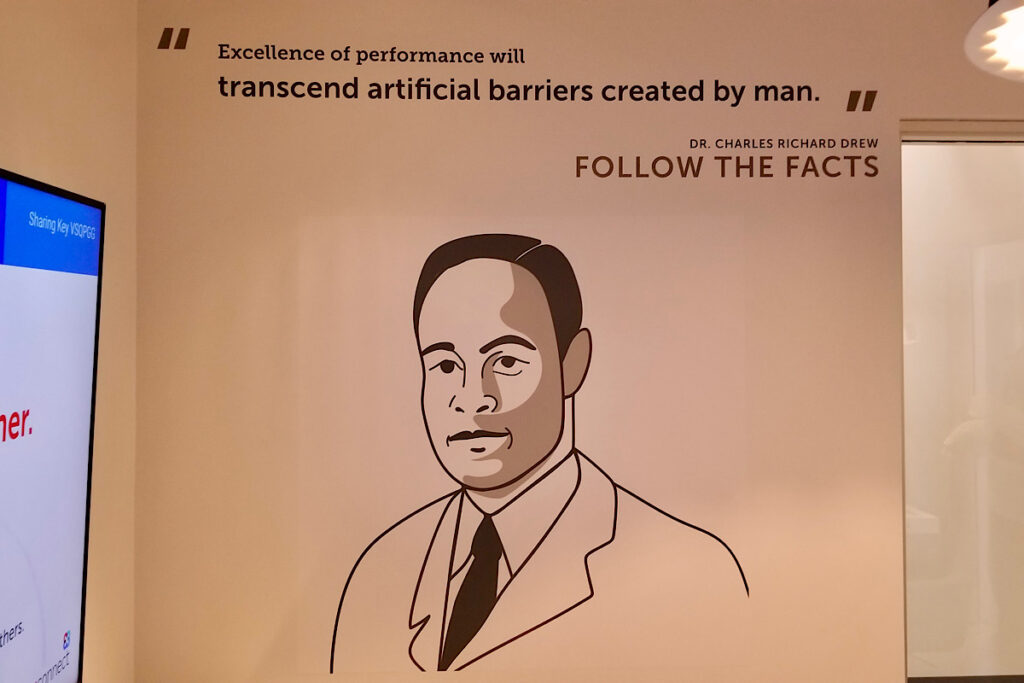
Your Workplace Deserves Signage That Works
Signage affects everything from your visitors’ first impression to your employees’ daily experience. It’s part of your workflow, brand, safety system, and company culture. Looking for custom signage near me that balances brand, compliance, and clarity? We design signage systems trusted by leading companies across Southern California. As a trusted signage company in Los Angeles, we help organizations turn their workspace signage into a tool for communication, consistency, and confidence.
Ready to rethink your signage?
We help businesses, from hospitals and law firms to corporate HQs, design signage systems that align with how they work and grow.
Let’s build signage that works for your space, your people, and your future.
